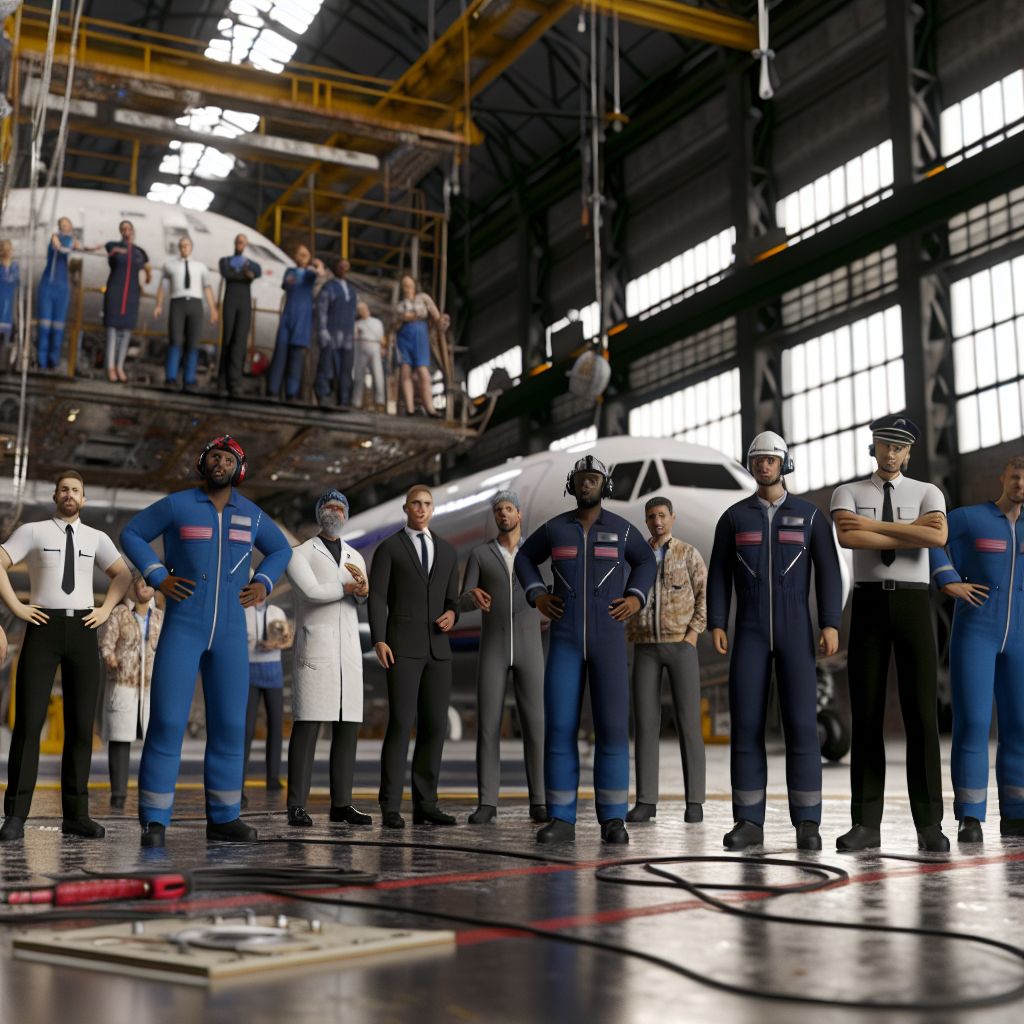Deutsch: Flugmechanik von Luftfahrzeugen / Español: Mecánica de vuelo de aeronaves / Português: Mecânica de voo de aeronaves / Français: Mécanique de vol des aéronefs / Italiano: Meccanica del volo degli aeromobili
Aircraft Flight mechanics in the Space industry refers to the principles and techniques used to understand and predict the behavior of spacecraft during various phases of their flight, particularly when they operate within an atmosphere. These mechanics are crucial for designing spacecraft that can enter, exit, or maneuver within planetary atmospheres, such as spaceplanes or capsules designed for re-entry.
Description

Aircraft flight mechanics encompasses the study of forces and moments acting on a spacecraft and the resulting motion of these vehicles. In the space industry, these principles are extended to include the unique conditions of space travel, such as Vacuum, microgravity, and the thin atmospheres of other planets. The fundamental aspects of flight mechanics—such as Lift, drag, thrust, and Weight—that govern the motion of aircraft are adapted to address the challenges faced by spacecraft.
This adaptation includes understanding:
- Aerodynamics: How the shape of the spacecraft affects its ability to generate lift and minimize drag during atmospheric flight phases.
- Thrust and Propulsion Systems: How different propulsion systems behave in vacuum versus atmospheric conditions, including the use of Rocket engines and jet propulsion for various maneuvers.
- Stability and Control: How to maintain control over the spacecraft's orientation and trajectory using fins, thrusters, and gyroscopes, especially during Critical operations like landing or docking.
Application Areas
The principles of aircraft flight mechanics are applied in several critical areas within the space industry:
- Re-entry Vehicles: Ensuring that vehicles such as space capsules and shuttles can safely re-enter Earth’s atmosphere, requiring precise calculations of flight dynamics to manage Heat shield orientation, descent trajectory, and landing maneuvers.
- Spaceplanes: Vehicles that operate both as aircraft in Earth's atmosphere and as spacecraft in Orbit, such as the Space Shuttle or proposed commercial spaceplanes like the Virgin Galactic’s SpaceShipTwo.
- Mars and Lunar Landers: Designing landing modules that can navigate the thin atmospheres of Mars or the vacuum near the Moon, focusing on stable descent and touchdown.
Well-Known Examples
- The Space Shuttle was a prime example of an Aerospace vehicle that utilized aircraft flight mechanics extensively. Its Design and operation during the atmospheric entry, descent, and landing phases were heavily influenced by traditional Aerodynamic principles.
- Virgin Galactic’s SpaceShipTwo and other suborbital spacecraft being developed for commercial space travel rely on flight mechanics to manage their brief journeys into space and return to Earth.
Treatment and Risks
Understanding and applying aircraft flight mechanics in the space industry involves several challenges and risks:
- Complex Interactions: The interaction between aerodynamic forces and the control systems of spacecraft, particularly at hypersonic speeds during re-entry, is complex and can lead to instability if not properly managed.
- Predictive Accuracy: Accurate modeling of flight dynamics is crucial, as errors can lead to mission failure. This requires sophisticated Simulation tools and extensive testing.
- Environmental Factors: The Variability of atmospheric conditions on Earth and the unknowns of other planetary atmospheres add layers of Complexity to flight mechanics calculations.
Summary
In the space industry, aircraft flight mechanics is a fundamental discipline that ensures the safe and efficient design and operation of spacecraft, especially those that transition between space and atmospheric flight. These mechanics are crucial for a wide range of applications, from Earth re-entry vehicles to Interplanetary landers, providing the necessary theoretical and practical framework to navigate the complex environments encountered during space missions.
--
Related Articles to the term 'Aircraft flight mechanics' | |
| 'Aircraft flight control system' | ■■■■■■■■■■ |
| An Aircraft flight control system in the space industry refers to the technologies and methods used to . . . Read More | |
| 'Glider' | ■■■■■■■■■ |
| Glider in the space industry refers to an unpowered or semi-powered craft designed to glide through the . . . Read More | |
| 'Mechanics' | ■■■■■■■ |
| Mechanics is the branch of physics that deals with the study of motion, forces, and energy in a system. . . . Read More | |
| 'Aeroplane' | ■■■■■■■ |
| Aeroplane: In the space industry context, the term \"aeroplane\" isn\'t typically used in its traditional . . . Read More | |
| 'Astronautics' | ■■■■■■■ |
| Astronautics in the space industry context refers to the science and technology of space travel, including . . . Read More | |
| 'Airfoil' | ■■■■■■■ |
| Airfoil: An airfoil is a shape designed to generate lift when air flows over it, commonly used in the . . . Read More | |
| 'Earth' | ■■■■■■■ |
| The Earth plays a central role in the aerospace industry, as it is the planet where all aerospace vehicles . . . Read More | |
| 'Electromagnetism' | ■■■■■■ |
| Electromagnetism in the space industry refers to the study and application of electromagnetic forces . . . Read More | |
| 'Astrophysicist' | ■■■■■■ |
| Astrophysicist in the space industry context refers to a scientist who studies the physical properties . . . Read More | |
| 'Zero Gravity' | ■■■■■■ |
| Zero Gravity (\"zero-G\" or \"microgravity\") refers to the condition of near weightlessness that occurs . . . Read More | |
